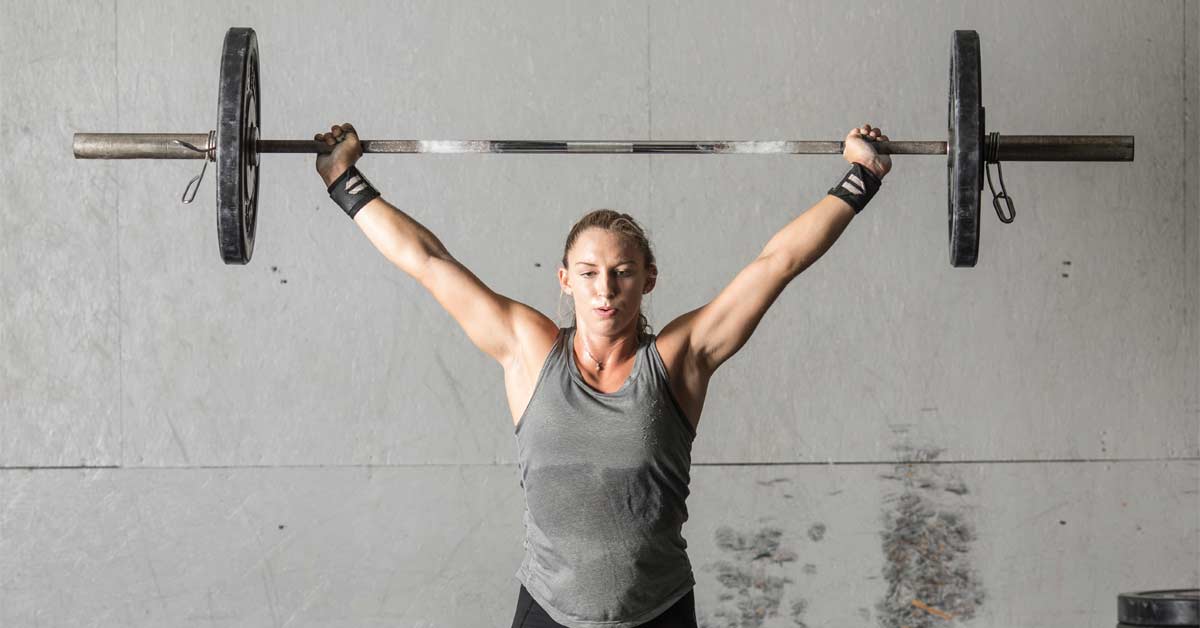Freelap USA: Bar path is something that requires time and expertise to fully grasp. Now that technology is available to make it more accessible, what are things you look at when analyzing lifting?
Harvey Newton: Trajectory is worth noting, but an athlete is not restricted to effectively pulling only via the theoretical model. Segment variations, national technique preferences, individual idiosyncrasies, etc. all may affect trajectory and/or lifting technique. What is crucial for optimal performance is the effectiveness of an athlete’s technique.
What is crucial for optimal performance is the effectiveness of an athlete’s lifting technique. Share on XIn systems where technique is uniformly taught, effective technique is established early on. Other systems often produce more random technique variations. Optimized athletic physical characteristics along with solid, repeatable lift performance with an emphasis on power production are the keys to success.
Freelap USA: Maximal strength is part of athlete development, so how did you approach squatting with athletes that you coached? While it’s not essential that you have the biggest squat, it is important that you have some base strength. How do you assess how much is enough over a career?
Harvey Newton: I emphasize optimal, rather than maximal, strength as the key to weightlifting success. Seldom does a powerlifter (in a sport that rewards maximal strength) make a successful transition to weightlifting. This is often the result of flexibility challenges. It may be due to taking up weightlifting too late in a career. The lack of transfer can result from the powerlifter being perhaps “too strong” to become a great weightlifter.
(See Coach Newton teaching “How to Clean & Jerk” HERE)
The well-documented ratios of snatch to squat (60%–64%) and clean and jerk to squat (77%–81%) remain valid today. If a lifter’s results fall outside these ranges, it is recommended that they improve overall strength (as measured by the squat) or de-emphasize squatting while improving technical efficiencies. We seldom hear of maximal (1RM) squat performances with international elite lifters. It is more likely that we may learn of a best 3RM performance. The quest for a 1RM squat may introduce unnecessary risks for a non-powerlifter.
I emphasize optimal, rather than maximal, strength as the key to weightlifting success. Share on XFor balanced lifters, I programmed squatting twice a week in a preparation phase with front squats included once a week. This 2:1 ratio was reversed during a competition phase. During the final four weeks I often utilized speed squats (timing the ascent) for the non-front squat sessions. In both instances, lighter weights resulted in a greater emphasis on speed as the meet approached.
Freelap USA: Athlete health is a priority in training. Can you explain why the Olympic lifts are not dangerous and are a potentially great way to increase the durability of athletes who don’t compete in the sport?
Harvey Newton: Numerous published investigations suggest that weightlifting has a very low incidence of injury. Several position papers from prestigious organizations support this conclusion. This presumes proper coaching. Unsupervised or poorly supervised weightlifting certainly may lead to an increased risk of injury.
Not all non-weightlifters need or benefit from weightlifting training. For example, in the Olympic sports of archery or canoe/kayak there are no obvious benefits. In rowing, volleyball, and athletics, the benefits are more intuitive. If joint, muscular, or neuromuscular characteristics are similar between a sport and weightlifting, then yes, there may be some beneficial transfer.
But simply looking at the power production numbers of elite lifters and suggesting a volleyball or football player will benefit from snatching and cleaning presumes the non-lifter performs these lifts in the same way as the elite lifter. Oftentimes, this is not the case. In such a scenario, we may ask: Is training snatch and C&J a worthwhile pursuit?
Freelap USA: Outside of lifting, what activities do you have athletes perform to prepare for the sport? Anything in particular you feel makes an impact in developing the complete Olympic lifter?
Harvey Newton: Weightlifting requires a complete athletic model of optimal strength, explosive power, better-than-average flexibility, and solid psychological skills. Good weightlifters’ jump performances approach outstanding. Some years back, the Colorado Springs OTC women’s resident weightlifters and the women’s national volleyball team staged a vertical jump challenge. The lifters beat volleyball in a standing effort; the latter bested the former in a three-step approach effort. Both results reflect sport specificity.
I prefer a daily general physical training session in which any number of physical traits might be challenged. In other words, aim to develop a complete athlete, not simply a specialist. Share on XIn a residential setting such as the OTC, my preference was for a daily general physical training session in which any number of physical traits might be challenged. In other words, aim to develop a complete athlete, not simply a specialist. That said, I have certainly known elite lifters who struggled to demonstrate athletic skill beyond the snatch and C&J.
Freelap USA: How do you screen athletes who are new to the sport for training? Obviously, a new athlete may not be 100% able to perform the lifts in their entirety regardless of their skill. Any ideas here?
Harvey Newton: Weightlifting is an advanced form of training, appearing at the far end of the resistance training continuum. Anyone desiring to learn weightlifting may begin mastering basic technique early on.
At age-appropriate stages, a newcomer should undergo a stepwise progression that leads to weightlifting success. This includes beginning with bodyweight resistance exercises before taking up general weight training exercises. This is followed by more serious strength training. Finally, the athlete is ready for weightlifting specialization. This process may take anywhere from a few months to perhaps several years, depending on age, experience, and skill.
I have aspiring lifters learn proper technique through successive approximations of the entire lift. This works better than starting with a complete lift from the platform. This results-proven method of learning the lifts is well-documented at www.sportsedtv.com.
[freelap-share]






